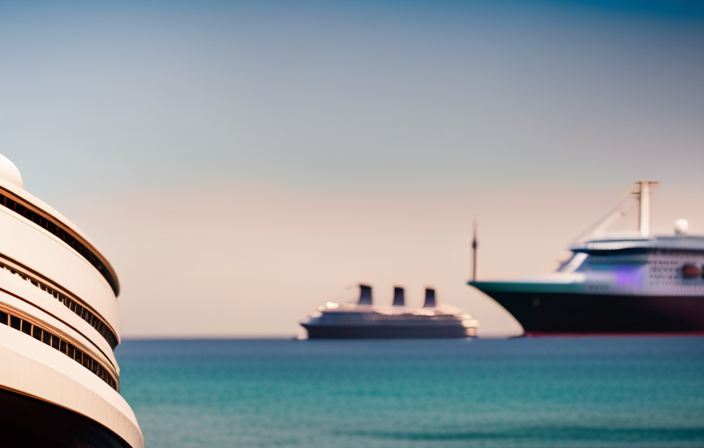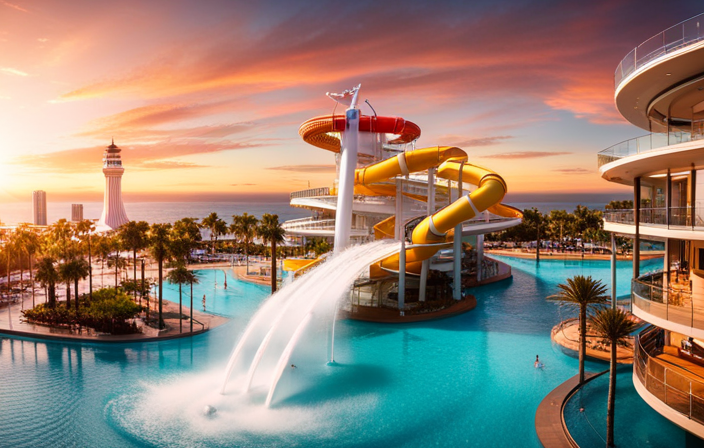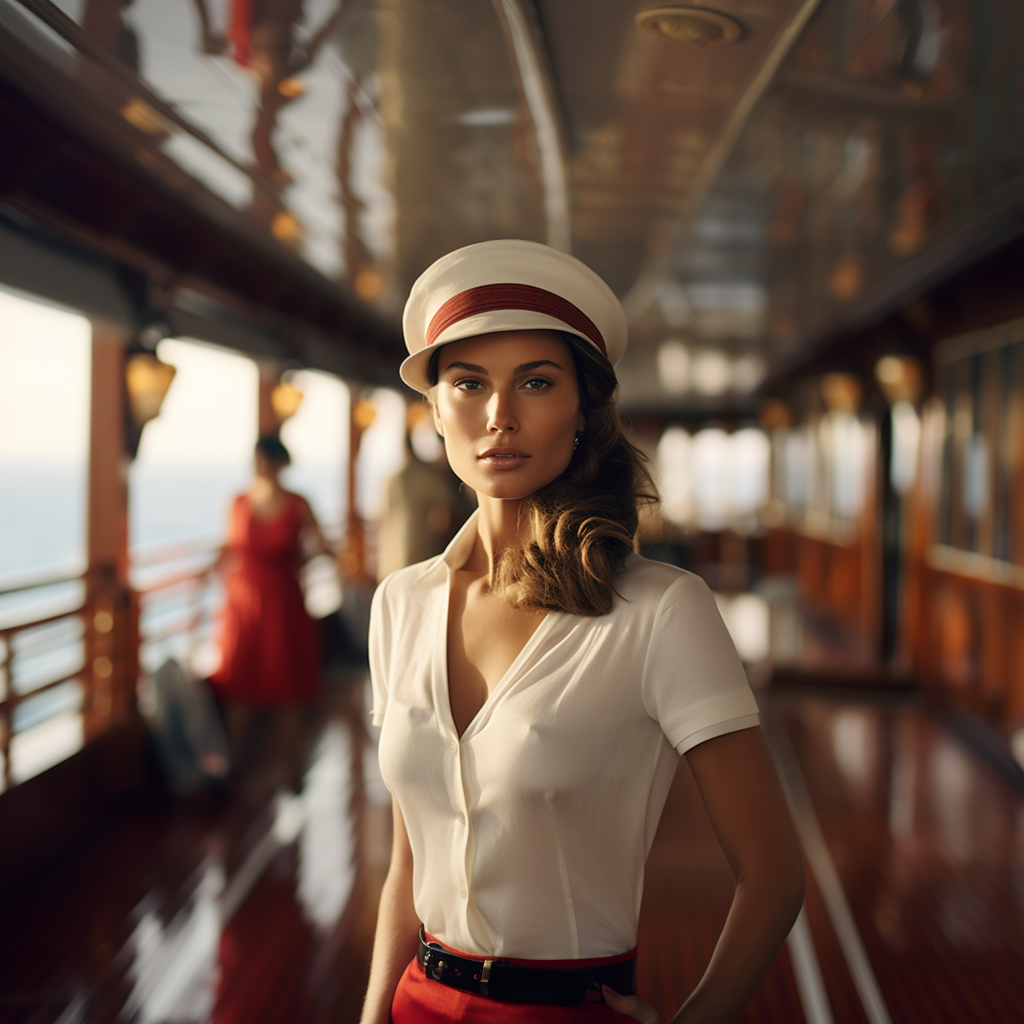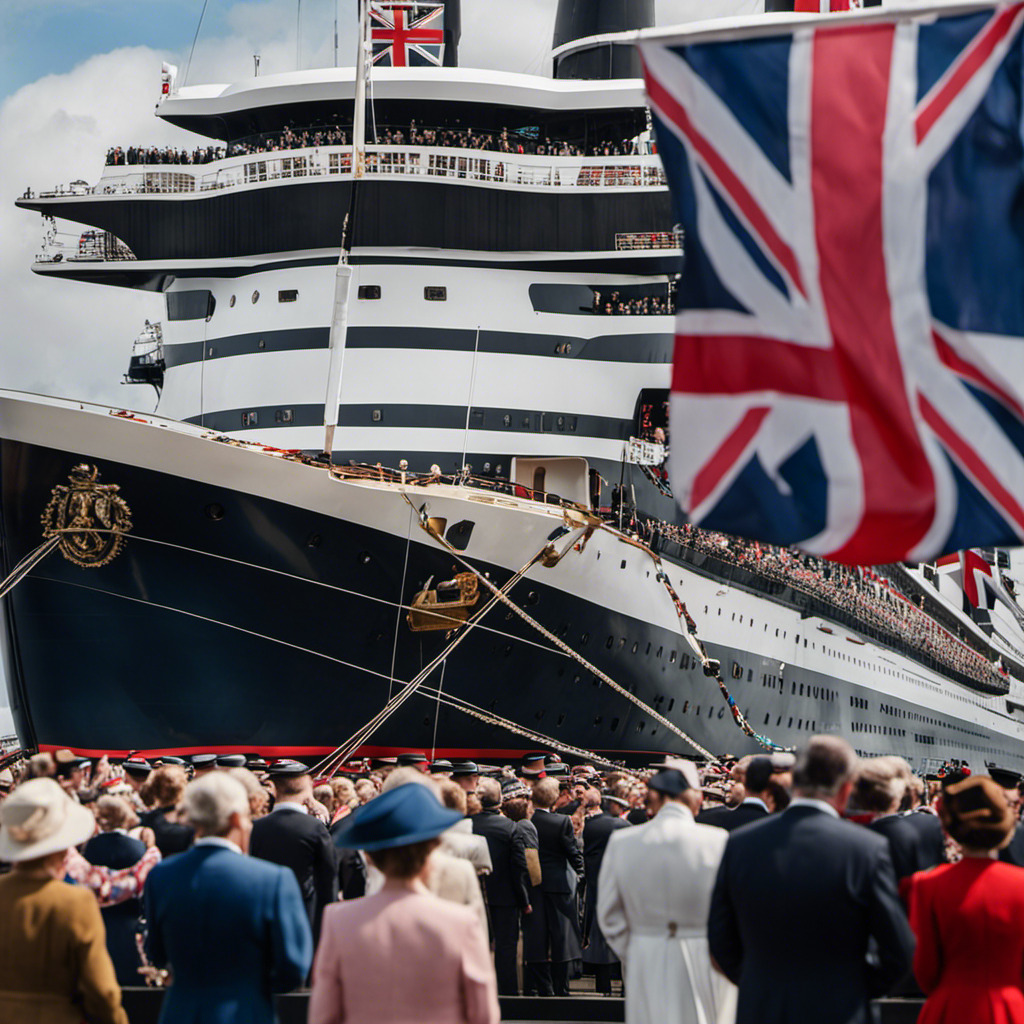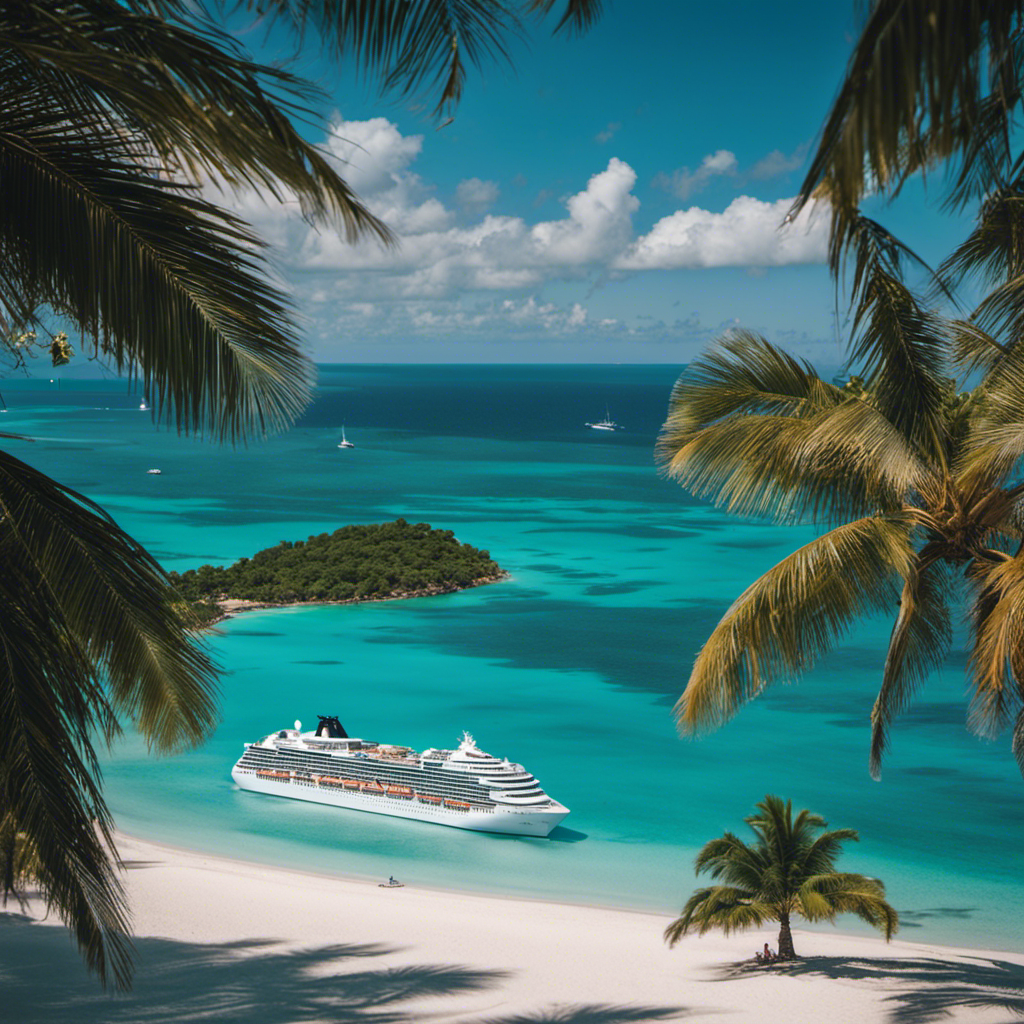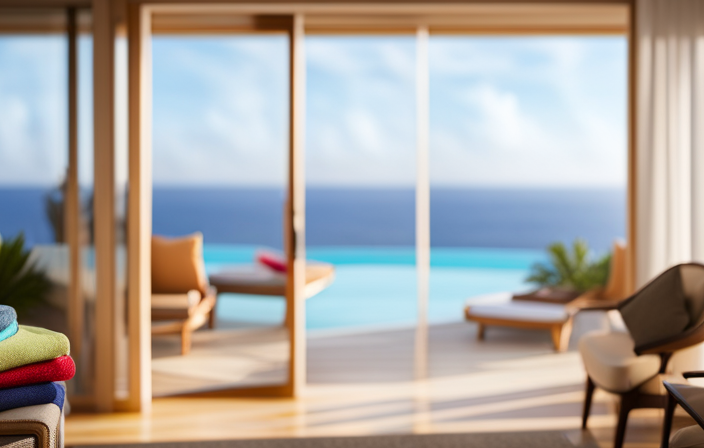You may be wondering, what really distinguishes ocean liners from cruise ships? While they may appear similar as vehicles for transporting people across the sea, there is actually much more to consider.
As someone who has always been fascinated by the world of maritime travel, I can assure you that the distinction between ocean liners and cruise ships is significant and deserves our attention.
Ocean liners, with their sturdy construction and focus on speed and reliability, were once the epitome of luxury and sophistication. They were built to withstand any weather conditions and transport passengers across continents with precision and efficiency.
On the other hand, cruise ships, with their emphasis on leisurely voyages and onboard amenities, have evolved into floating resorts that offer a wide range of entertainment and relaxation options.
In this article, we will explore the characteristics of ocean liners and cruise ships, the evolution of these vessels over time, and the influence of aviation technology on their design.
So buckle up, my fellow adventurers, as we embark on a journey across seas to uncover the fascinating world of ocean liners and cruise ships.
Key Takeaways
- Ocean liners were primarily used for transportation between continents, while cruise ships focus on leisure and pleasant voyages.
- Ocean liners prioritize schedule and weather resistance, while cruise ships prioritize onboard amenities and entertainment.
- Ocean liners were built to withstand any weather conditions and had significant technological advancements to decrease Atlantic crossing time.
- Cruise ships have evolved from repurposed ocean liners to larger ships with increased amenities, resembling hotels, and are not designed to handle extreme weather conditions.
Distinct Differences
I can clearly distinguish between ocean liners and cruise ships based on their primary purposes and priorities.
Ocean liners were designed for reliable transportation between continents, prioritizing schedule and weather resistance. They were built to withstand any weather conditions, with faster speeds and stronger materials. The advantages of ocean liners include their ability to provide a reliable and efficient mode of transportation across the ocean.
On the other hand, cruise ships focus on leisurely voyages to pleasant destinations, prioritizing onboard amenities and entertainment. They have lower free boards and towering superstructures to maximize space for accommodations. However, cruise ships have drawbacks when it comes to extreme weather conditions, as they are not designed to handle them. They can avoid bad weather by changing ports of call or altering routes.
Despite these differences, both ocean liners and cruise ships have played significant roles in connecting the world and making ocean travel accessible.
Characteristics of Ocean Liners
Built to withstand any weather conditions, ocean liners are constructed with deeper drafts, longer bows, higher free boards, and stronger materials. These characteristics allowed ocean liners to navigate through rough waters and ensure the safety of passengers and crew on board. Ocean liner technology, particularly the development of steam engines in the mid-19th century, played a significant role in revolutionizing travel across oceans. The introduction of steam-powered ocean liners, such as the RMS Britannia, marked a new era of accessible and glamorous ocean travel. Technological advancements between 1840 and 1920 further decreased the Atlantic crossing time, making it more convenient for people to travel between continents. Despite the decline in the construction of new ocean liners in the 1960s, the remaining ocean liner, RMS Queen Mary 2, continues to operate as a scheduled transatlantic liner, emphasizing the historical significance and enduring legacy of ocean liners.
| Ocean Liner Technology | Historical Significance of Ocean Liners |
|---|---|
| Steam engines | Revolutionized travel across oceans |
| RMS Britannia | Marked a new era of accessible and glamorous ocean travel |
| Technological advancements | Decreased Atlantic crossing time |
| RMS Queen Mary 2 | Last remaining ocean liner, carrying passengers between continents |
Evolution of Cruise Ships
The evolution of cruise ships has been influenced by changing travel preferences and advancements in aviation technology. Design advancements have allowed cruise ships to cater to a larger number of people by offering a wide range of amenities and resembling hotels. With lower free boards and towering superstructures, modern cruise ships maximize space for accommodations, creating a luxurious and comfortable experience for passengers.
However, unlike ocean liners, they aren’t built to handle extreme weather conditions.
The impact of these design advancements on the tourism industry has been significant. The larger size of cruise ships allows for more onboard activities and entertainment options, attracting a diverse range of travelers. Cruise ships have become a popular choice for vacationers, offering a convenient and enjoyable way to explore different destinations. They provide an immersive experience with various amenities such as restaurants, theaters, and spas, making them floating resorts.
Overall, the evolution of cruise ships has transformed the way people travel and experience the world. These floating marvels have revolutionized the tourism industry, providing a unique and unforgettable vacation experience for millions of people worldwide.
Influence of Aviation Technology
Aviation advancements have significantly impacted the decline in the construction of new ocean liners for transcontinental travel. With the introduction of jet-powered airliners, transcontinental travel became more efficient and convenient compared to the slower ocean liners.
As a result, the demand for ocean liners declined in the 1960s. However, this shift in the travel industry had a positive impact on the cruise ship industry. Cruise ships were able to take advantage of aviation technology by offering a wide range of amenities to a larger number of people at a lower cost.
Passengers could now enjoy the luxury and entertainment of a cruise ship while traveling to various destinations. The modern technologies and size of cruise ships ensure safety despite their different mission compared to ocean liners.
Overall, the influence of aviation technology has reshaped the industry, making cruise ships a popular choice for leisurely voyages across the seas.
Repositioning Cruises
During repositioning cruises, cruise ships occasionally offer transoceanic voyages to move between different regions and provide more time for onboard activities. Repositioning cruises have several advantages, such as the opportunity to explore new destinations and experience longer periods at sea. This allows passengers to fully immerse themselves in the onboard amenities and entertainment options.
Additionally, repositioning cruises often offer discounted fares, making them an attractive option for budget-conscious travelers. However, there are also challenges associated with repositioning cruises. One major challenge is the unpredictability of weather conditions during the voyage, as cruise ships aren’t designed to handle extreme weather like ocean liners. Furthermore, passengers must be prepared for longer travel durations and potential changes in ports of call.
Despite these challenges, repositioning cruises offer a unique and exciting way to travel between regions and enjoy extended time onboard a cruise ship.
- Opportunity to discover new destinations
- Longer periods at sea for onboard activities
- Discounted fares for budget-conscious travelers
- Unpredictability of weather and potential changes in ports of call
Frequently Asked Questions
What were the main reasons for the decline in the construction of new ocean liners in the 1960s?
Ah, the decline of new ocean liners in the 1960s. Well, it seems that pesky aviation technology made transcontinental travel faster and more efficient, leaving those majestic liners in the dust. Not to mention the impact of technological advancements on their crossing time. Quite the blow, I must say.
How do ocean liners and cruise ships differ in terms of their onboard amenities and entertainment options?
Ocean liners and cruise ships differ in terms of onboard amenities and entertainment options. Cruise ships prioritize onboard amenities and entertainment, while ocean liners focus on reliable transportation. This contributed to the decline in new ocean liner construction in the 1960s.
What are some of the technological advancements that contributed to the decrease in Atlantic crossing time for ocean liners between 1840 and 1920?
Technological advancements during 1840-1920 greatly impacted travel time for ocean liners. Innovations like steam engines, improved hull designs, and more efficient propellers allowed for faster crossings, making ocean travel more accessible and glamorous.
Can cruise ships handle extreme weather conditions like ocean liners?
Cruise ship safety is a top priority, but they are not built to handle extreme weather conditions like ocean liners. Bad weather can impact cruise ship travel, but they have the ability to change ports of call or alter routes to avoid it.
How do repositioning cruises benefit both the cruise ship industry and passengers?
Repositioning cruises offer a unique experience for both the cruise ship industry and passengers. They provide more time for onboard activities and allow ships to move between regions, benefiting local economies along the way.
Meet Asra, a talented and adventurous writer who infuses her passion for exploration into every word she writes. Asra’s love for storytelling and her insatiable curiosity about the world make her an invaluable asset to the Voyager Info team.
From a young age, Asra was drawn to the power of words and their ability to transport readers to far-off lands and magical realms. Her fascination with travel and cultures from around the globe fueled her desire to become a travel writer, and she set out on a journey to turn her dreams into reality.

